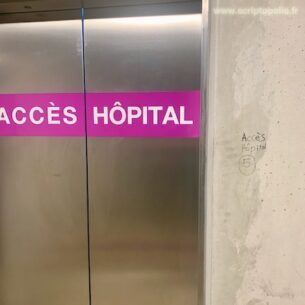Setting apart
Recently bicycle has been an object of reinvestment as a green technology of mobility. In numerous cities around the world, bicycle usage has dramatically increased in the last decade, notably through bicycle-sharing systems. As a consequence, various dedicated infrastructures have proliferated that transformed the appearance of urban settings: spaces have been re-ordered through a series of new marks, lanes, median strips… This kind of reordering process is not only directed towards physical infrastructures. It has also complicated the sorting of vehicular units, promoting the existence of some entities and limiting others. In a way, it extends the “traffic fight” that emerged during the reconstruction of streets for the sake of motorists in the first decades of the twentieth century.
Of course, the struggles to define and redefine what streets are for take place in different city departments, users campaigns, demonstrations… But they are also visible in urban settings themselves. The rules that resulted from debates and legal decisions to apportion public spaces among different kinds of vehicles and persons are literally objectified in various inscriptions: they are written onto the surface of the very infrastructures of every site, such as instructions inscribed on different signs dedicated to circulatory objects. Here a cycle lane is materialized with yellow and white lanes and a bike logo. And a white arrow indicates to turn left in order to avoid the metal barrier. The space left to go through is so narrow that one has almost to stop and get off the bike. Clearly, cyclists are urged to be careful to another city user that is crucial in the competition for public space: pedestrians that regularly get out of the university exit on the right after the barrier.







